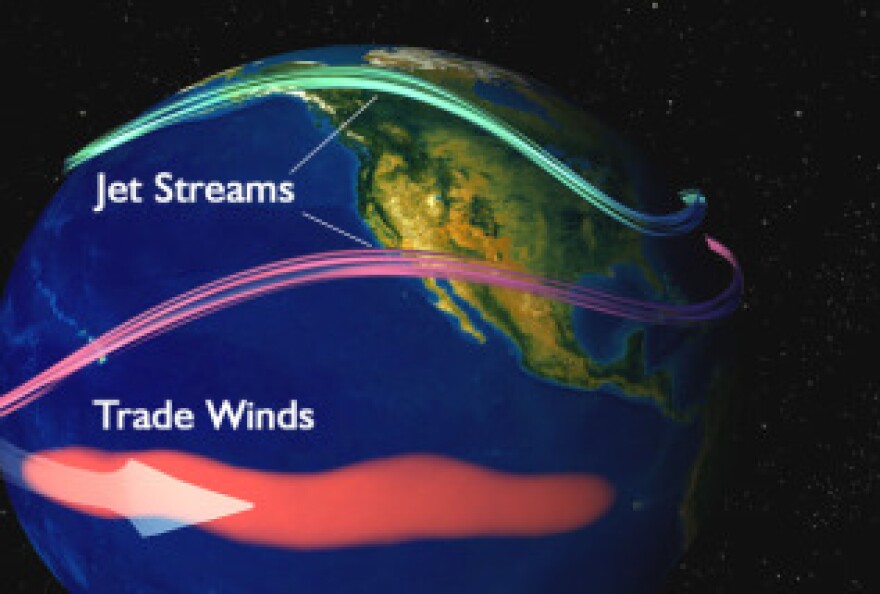With our free press under threat and federal funding for public media gone, your support matters more than ever. Help keep the LAist newsroom strong, become a monthly member or increase your support today.
El Niño update: Still on track for a stormy SoCal winter

Rising ocean temperatures in the equatorial Pacific and diminishing trade winds continue to indicate a strong El Niño climate pattern could bring much-needed rain to Southern California, according to the latest update from National Oceanic and Atmospheric Administration forecasters.
It's unclear whether this year's conditions in the Pacific will develop as strongly as those that created the intense 1997 El Niño weather system, but the 2015 version is shaping up to be one of the strongest of the last 50 years, said Bill Patzert, climatologist at NASA's Jet Propulsion Laboratory.
Wind is the wild card this season.
"It's large, it's very warm, and at this point, the drama is, will the trade winds relax enough in the next two to three months to make this the El Niño of our generation," Patzert said.
Scientists track two elements to determine the strength of an El Niño weather condition. Surface temperatures of the Pacific Ocean near the equator need to rise at least half a degree centigrade above average, and the generally east-to-west trade winds need to weaken, stall or reverse direction. In the 1997 El Niño episode, the winds stalled, or collapsed, enabling further ocean surface temperature increases.
This El Niño started off strong and early, Patzert said, with temperatures on the surface of the ocean near the equator up a couple of degrees centigrade over normal.
"Now it rivals the El Niño of the fall of 1997 but the big difference is that the trade winds have not relaxed as much," Patzert said. "The trade winds, in contrast with 1997, are still pretty strong out there, and so to make this the El Niño of our generation, we would have to see a relaxation of the trade winds over the next few months.
State Climatologist Michael L. Anderson said Californians should not count on El Niño to end the drought, even though some of the past El Niño winters have been wetter than average.
"A changing climate makes historical weather data less comparable," Anderson said. He advised people to continue conserving water, particularly during the hot fall months.
The chart shows sea surface temperature anomalies, or fluctuations in ocean temperature, in a region of the Pacific called Niño 3.4 in 1997 and so far in 2015.
Click on the graph below for an interactive index of El Niño sea surface temp anomalies
If temperatures there reach 0.5°C above average for at least three consecutive months, then an El Niño has formed. Not all El Niños are equal though, only the strong ones tend to bring rain to Southern California.
A strong El Niño season can translate into a higher likelihood of stormy weather for Southern California, but drought-busting rainfall is not guaranteed, said Nathan Mantua, a NOAA research scientist with Southwest Fisheries Science Center in Santa Cruz — which is separate from NOAA's National Weather Service predictions office, which puts out El Niño forecasts.
"It's still well above average chances for a wet fall and winter in Southern California, that's the latest forecast," Mantua said. "It's still on track with conditions that were observed during the El Niño of 1997."
A strong El Niño increases the chance for a wet winter in Central California but it does not increase the chances for much rain or snow in Northern California, where much of the imported water supply for the south originates.
Scientists track the rising ocean temperatures and wind conditions, using a three-month rolling average, and announce updates each month. Last month, NOAA's weather prediction center said the 2015-16 winter could be one of the strongest El Niños since they started keeping track back in the 1950s.
Mantua said it's unclear how the El Niño will play out as weather in Southern California because the condition forms far out in the Pacific Ocean and will not be felt here for several months.








